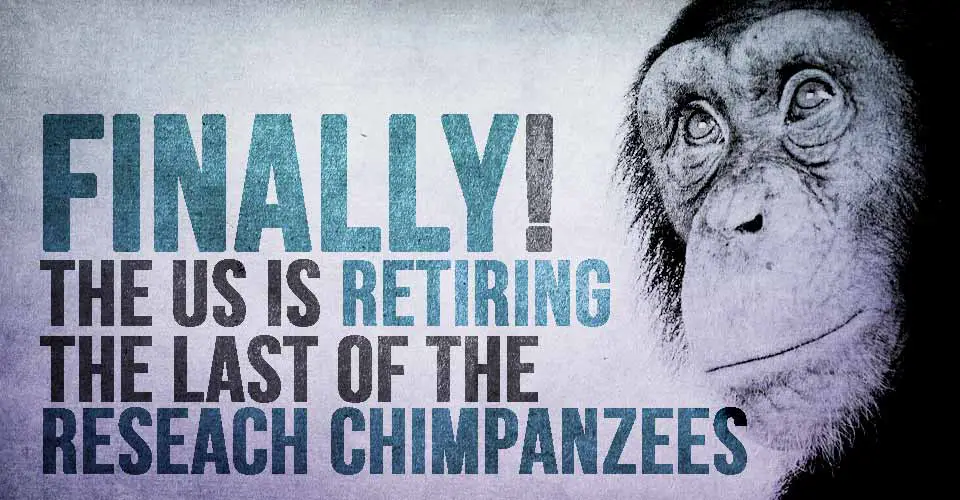FINALLY, after a 2-year wait, the final group of 50 chimpanzees owned by the National Institutes of Health (NIH) will be retired and placed in animal sanctuaries to live out the rest of their lives.
This last remaining group of chimps is part of a group of 132 that are all that is left of the medical research chimpanzee in America. Other countries like Austria, New Zealand, and Germany banned research on chimps back in 1986. The US surely isn’t a pioneer in ending this type of research, but at least they are catching up.
Buy an “Intelligence is sexy” t-shirt!
Back in 2013, 310 chimps were officially “retire” from testing facilities and sent to sanctuaries, but the NIH was the last organization to continue to use them.
Francis Collins, the director of the NIH said, “I think this is the natural next step of what has been a very thoughtful five-year process of trying to come to terms with the benefits and risks of trying to perform research with these very special animals. We reached a point where in that five years the need for research has essentially shrunk to zero.”
Part of the pressure to phase out the last chimpanzees that are being used as research animals came earlier this year when the US passed a law that gave chimps the same protection as endangered species.
Read: What Scientists Have Found in South Africa is Rewriting the History of Mankind
The end of chimp research potential is causing a problem for some scientist, though. Specifically scientist that are focused on chimpanzee conservation like Peter Walsh. Walsh was working on an ebola vaccination that would be specific to chimps to protect them from the virus in the wild, but now he has no way to test it.
“There really is no other place to do conservation-related trials but the US biomed facilities,” according to Walsh. Other scientists, like Allyson Bennet from the University of Wisconsin-Madison, are concerned that the sanctuaries where the chimps will be sent won’t provide the same level of care that they received in funded laboratories.



